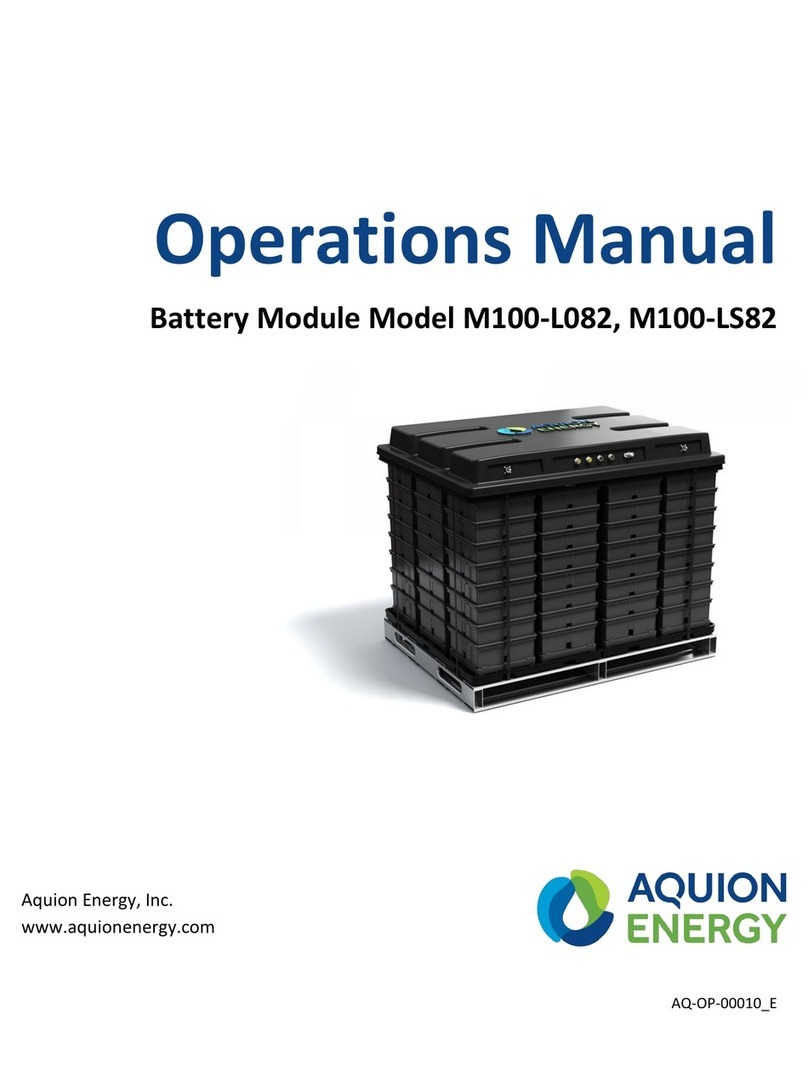
1 AQ-OP-00018_E.01 | 02.23.17
1Introduction
1.1 About This Manual
This manual is intended to provide technical information and safe practices regarding receiving,
installing, and operating the Aquion Energy Aspen battery. For complete safety information, refer to
the Safety Data Sheet (SDS) included with your product shipment.
WARNING
Failure to follow the instructions in this document could result in fire, electric shock, and/or
other injury or damage.
1.2 Contact Information
32 39th Street
Pittsburgh, PA 15201
Telephone: +1 412.904.6400
aquionenergy.com
2Product Information
2.1 Product Overview
Aqueous Hybrid Ion (AHITM) batteries use non-toxic, non-corrosive materials to make the world’s only
clean and sustainable electrochemical storage solution. Aquion Aspen 48S, 48M, and 24S batteries
provide long-duration, stationary storage for residential solar, off-grid, microgrid, and energy
management applications.
Aspen 48S
The Aspen 48S is the base component of Aquion Energy’s scalable energy solutions. The Aspen 48S
connects eight AHI battery cells in series for an unfused, 48 V product.
Aspen 48M
The Aspen 48M is a palletized, pre-wired, plug-and-play battery bank. It can serve as a stand-alone
system or as a modular building block for larger systems. The Aspen 48M battery connects twelve
Aspen 48S batteries in parallel, adds fusing for each 48S, and includes on-board sensing of the 48M’s
voltage, current, and temperature.
Aspen 24S
The Aspen 24S is a 24 V variant of the Aspen 48S battery. The Aspen 24S connects two parallel strings
of four series-connected AHI battery cells for an unfused, 24 V product.
2.2 Product Specification
Voltage curves, operational efficiency, capacity by charge and discharge currents, standards
compliance and certification status, and more information can be found on the Product Specification
Sheet for your battery model (http://aquionenergy.com/support/product-documentation). The
battery’s model number appears on the product label.























